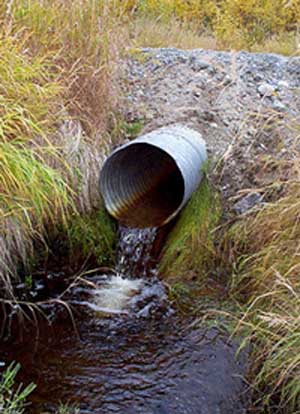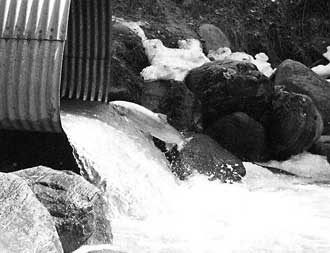 |
Home > Pebble Mine Information > FisheriesFisheries Impacts at the Pebble MineRoad Construction: Potential Fisheries Impacts Prepared by Dr. William J. Hauser, Fish Talk Consulting Large metal mines require substantial infrastructure. Roads to support the Pebble Mine could cross 20 known salmon streams and numerous potential fish-bearing streams. This fact sheet describes how road construction can pose barriers to fish passage and what this may mean for fish stocks. Background Fish need unobstructed passage among disconnected habitats. Adult fish migrate to spawning and feeding habitats and juvenile fish migrate to and from rearing and refuge habitats. Each stream has unique characteristics. Each fish population in a particular stream is uniquely adapted to maximize survival in that stream. Collectively, populations comprise a complete stock complex that sustains the region’s valuable fisheries. Blocking access to essential habitats can cause declines in fish productivity and diversity reducing the likelihood of long term sustainability. The return of anadromous fish also maintains stream productivity as decomposing carcasses release nutrients to the food chain to provide food for rearing salmon, resident species, terrestrial animals and vegetation.
Challenges A fish population cannot survive if free passage to essential habitats is blocked. Poorly-functioning culverts and bridges create conditions in which water is too shallow or fast for fish to cross, and culverts are too high for fish to jump. Although well-designed bridges provide better fish access than culverts, culverts are often used and regulators must recognize the need and challenges to assure adequate fish passage. Some challenges include:
In addition, higher gradient streams (> 1%) present greater challenges for design and installation, and stream crossings planned and installed for today’s environmental conditions may become inadequate if global climate change leads to more frequent and intense storms. How serious is the problem? Fish passage problems associated with inadequate design, installation, or maintenance of stream crossings, particularly culverts, have been widely documented. Examples include1:
What does this mean for the Pebble Project? A 104-mile access road is proposed from the mine site to a deep-water port in Cook Inlet.2 The road will also serve as a corridor for an ore slurry pipeline, a waterline to return recycled water to the mine site, and a corridor for the power line. Approximately one third of the distance crosses higher-gradient terrain which creates design challenges. The road may require as many as 120 crossings of streams ranging from small and intermittent to large perennial rivers such as the Newhalen River. After this road has been pioneered, the construction of connecting roads and spur roads is likely. Construction and maintenance of these roads are likely to create collateral fish passage issues.
Conclusion Many streams in the Pebble area support anadromous and resident fish, and all contribute to spawning, rearing, or refuge habitat used by these species over the course of their life-cycles. Poorly designed, installed, or maintained stream crossings will jeopardize fish fully utilizing these streams for spawning, rearing and refuge habitats, reducing population and genetic stock complexity. Such losses of biodiversity can adversely affect long term sustainability of salmon populations.
Text by William J. Hauser, Fish Talk Consulting. May, 2008.
Fish Passage Fact Sheet (pdf file 277 kb) Further Reading and References |



